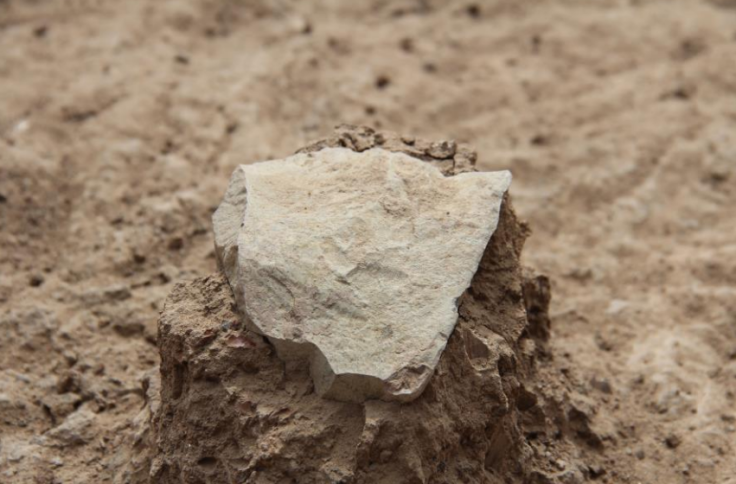World's Oldest Stone Tools, Predating Earliest Humans, Found In Kenya

In 2011, a team of researchers discovered a cache of stone tools near Lake Turkana in northern Kenya. The significance of this discovery, which was made by accident, became clear when these tools were dated and were found to be nearly 3.3 million years old -- about 700,000 years older than any tools found before.
Until now, the oldest known tools, dating back 2.6 million years, came from a find in Ethiopia. These are believed to have been crafted by the Homo habilis -- whose earliest known specimen dates back to 2.8 million years. “The premise was that our lineage alone took the cognitive leap of hitting stones together to strike off sharp flakes and that this was the foundation of our evolutionary success,” the researchers said, in a study published Wednesday in the journal Nature.
However, the latest discoveries, made at a site known as Lomekwi 3, suggest that our less evolved, more ancient ancestors were intelligent enough to make tools and perhaps deserve more credit than they have been given.
“This discovery revolutionizes our knowledge of human evolution. It provides the first archaeological evidence for the existence, more than 3 million years ago, of hominid cognitive and motor skills necessary for manufacturing hard stone tools,” the team of archaeologists who reported the findings in the journal, said, in a statement released Thursday.
A total of 149 stone artifacts linked to tool-making have so far been excavated from the site. Based on thorough examination, the researchers concluded that three separate objects -- a block to cut from, a hammerstone and an anvil -- would have been needed to create these tools, proving that whoever made them intentionally wanted to do so.

For now, though, the exact identity of the toolmakers and the purpose for which these tools were used remains a mystery.
“There are a number of possible candidates at present,” Nicholas Taylor, from the National Centre of Scientific Research (CNRS) in France and the University of Leiden in the Netherlands, and a co-author of the paper, told BBC.
“There was a hominin called Kenyanthropus platyops, which has been found very close to where the Lomekwi 3 tools are being excavated. … More widely in the East African region there is another hominin, Australopithecus afarensis, which is famously known from the fossil Lucy, which is another candidate.”
© Copyright IBTimes 2024. All rights reserved.












